1. Eggs Benedict

Eggs Benedict feels like it’s been around forever, served at classy brunches since the 1800s, but the version we know owes a lot to restaurants and hotels. While some early recipes existed, hotels popularized the dish as a signature menu item. Corporate branding helped cement its image as an “old-world” treat. Without that push, it might have stayed obscure.
The creamy Hollandaise and perfectly poached eggs became a marketing point for upscale establishments. Cookbooks and media coverage helped normalize it as a luxurious, timeless choice. The dish we order today is more about image than history. Most people assume it’s centuries old, when really it’s mid-century marketing genius.
2. Salisbury Steak
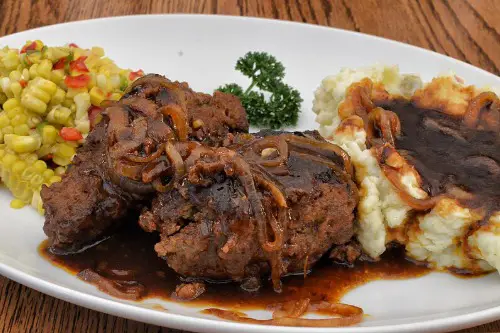
You might think Salisbury steak is a classic 19th-century dinner, but it’s actually more of a marketing invention. Meatpackers in the early 20th century popularized it as a way to sell cheap ground beef to families who wanted something “fancy.” The idea was to make a budget-friendly steak that looked upscale. So what feels like a traditional family meal is really a clever product pitch.
The name comes from Dr. James Salisbury, who advocated a high-protein diet, but the packaged, frozen version we know today came much later. Companies in the 1930s started selling pre-made Salisbury steak in cans and frozen trays. It was a hit because it made dinner easy and affordable. Essentially, it’s a convenience food dressed up as nostalgia.
3. Chicken Tetrazzini

Chicken Tetrazzini sounds like something your grandmother would’ve made for a holiday dinner, but it’s mostly a corporate creation. The dish was popularized in restaurants and later packaged for frozen food aisles. It’s essentially pasta, cream sauce, and chicken marketed as sophisticated. People associate it with home cooking, but it really owes its popularity to marketing campaigns in mid-century America.
The recipe itself may have existed in small circles, but it wasn’t mainstream until food companies turned it into a frozen dinner staple. By the 1950s and 1960s, companies were selling it as a convenient dinner solution. It appealed to homemakers who wanted something fancy without the work. The “old-fashioned” vibe is more about clever branding than culinary history.
4. Banana Split
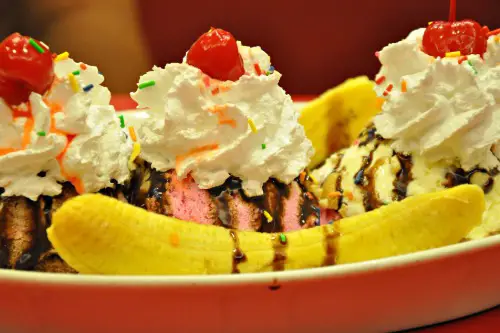
Most people picture the banana split as a timeless American treat from the 1800s, but the sundae craze that made it famous was heavily commercialized. Soda fountains and ice cream companies pushed banana splits as a way to sell more ice cream. The original treat was simpler, but marketing turned it into a three-scoop extravaganza with toppings. Today, we think of it as a classic, but it was really a sweet sales strategy.
By the 1900s, companies were mass-producing syrups and toppings to make banana splits more appealing. Promotions in newspapers and local events helped cement its status as “old-school Americana.” The image of the banana split has stuck, even if the dish itself evolved for profit. It’s nostalgia packaged and sold, literally.
5. Jell-O
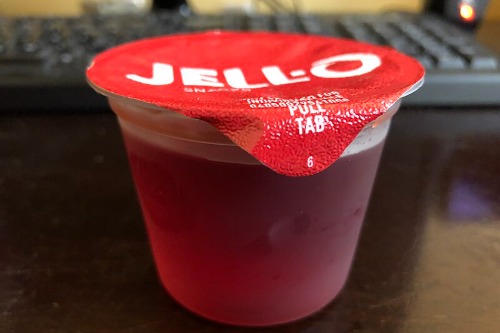
Jell-O is a gelatin dessert most Americans think of as a staple of mid-century dinner parties, but it’s largely a marketing miracle. The dessert existed in a basic form, but the vibrant, wiggly version we know today was shaped by ad campaigns. Ads targeted housewives with the promise of easy sophistication. Jell-O’s “classic” status owes more to clever promotion than culinary tradition.
The company pioneered recipes, colorful molds, and even recipe booklets to make Jell-O a household name. It became synonymous with American entertaining largely because of that relentless branding. People started associating it with nostalgia, not innovation. In reality, it’s a corporate invention dressed up as a traditional dessert.
6. TV Dinners
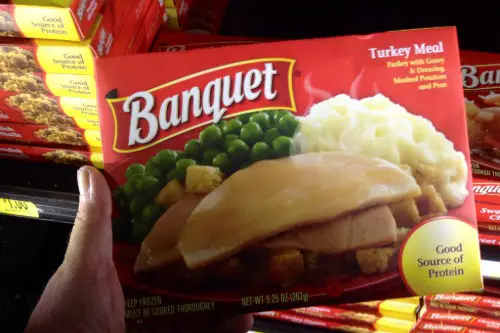
TV dinners might seem like a retro invention from the 1950s, but they were purely a product of corporate ingenuity. Companies wanted to sell frozen foods and saw television as the perfect marketing vehicle. They packaged pre-made meals to look convenient and modern. It wasn’t about tradition—it was about selling convenience to busy families.
These dinners were designed to make the most mundane meals feel futuristic. The packaging, portioning, and marketing all made them feel revolutionary at the time. Families grew up thinking of TV dinners as part of Americana, but it was all carefully orchestrated. The idea of a “classic” dinner in a tray is entirely manufactured.
7. Buffalo Wings
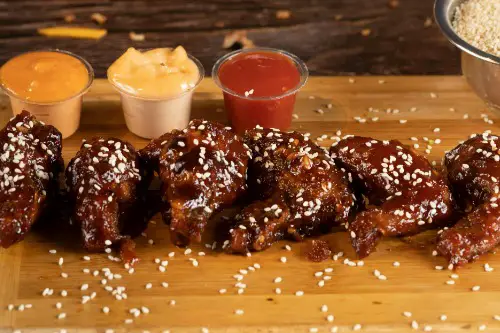
Buffalo wings are synonymous with American bar food, but they weren’t an age-old staple—they were invented in 1964 in Buffalo, New York. Bars quickly adopted them, and then food companies started mass-producing frozen versions. People think of them as “classic” game-day fare, but that fame is only a few decades old. Corporations helped make wings ubiquitous nationwide.
The original wings were simple, but brands added sauces, pre-cut packs, and convenience packaging. Marketing turned a local bar snack into a national obsession. Super Bowl parties and chain restaurants cemented their place in pop culture. Buffalo wings feel timeless, but they’re a very modern creation.
8. Potato Chips

Potato chips seem like an old-fashioned snack, but they weren’t popular until commercial food companies mass-produced them in the 20th century. They existed in small restaurants, but wider availability came from packaging innovations. Brands marketed them aggressively, making them an everyday American snack. Without corporate promotion, chips might have stayed a niche treat.
The “classic” crinkle-cut or thin slices came with logos, catchy ads, and convenience packaging. Flavors like barbecue and sour cream became household standards thanks to marketing. They’re a symbol of snack culture, not culinary tradition. Most people think potato chips are a century-old staple, but it’s really a marketing triumph.
9. Hot Dogs
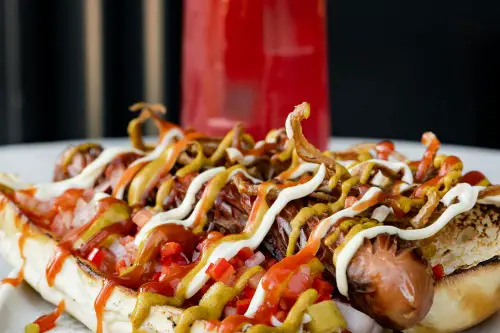
Hot dogs feel like they’ve been at every American picnic forever, but their mass appeal is largely the result of marketing campaigns. While sausages existed for centuries, the “hot dog” as a fun, stadium-ready snack is 20th-century Americana. Food companies and vendors packaged them as convenient and portable. They’re a great example of tradition being manufactured through marketing.
Brands pushed frankfurters in movies, fairs, and baseball games to create a cultural association. The result was that Americans now think of hot dogs as an inseparable part of history. It’s a clever blend of food and pop culture. Without that corporate boost, they might not feel like a classic at all.
10. Pop-Tarts
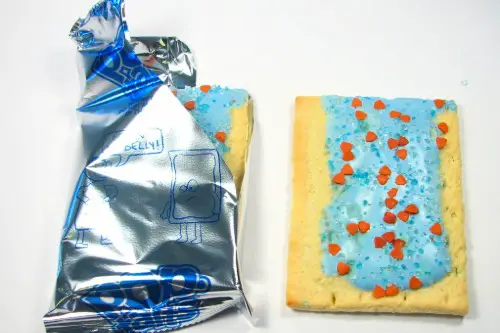
Pop-Tarts feel like a breakfast classic from the dawn of time, but Kellogg’s only introduced them in 1964. They were designed to sell convenience and appeal to kids with fun flavors. The nostalgia is mostly nostalgia for clever marketing. Families grew up thinking of them as a household staple, not a corporate invention.
The pre-toasted, frosted pastries were unlike anything home cooks had before. Breakfast convenience was the real selling point. Pop-Tarts dominated the frozen and shelf-stable aisles, cementing their iconic status. Today, they feel timeless, even though they’re only a few decades old.
11. Sloppy Joes
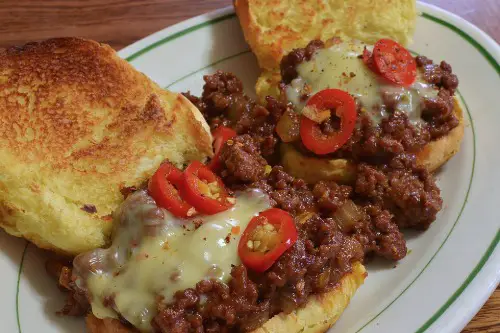
Sloppy Joes have the aura of a 1950s diner classic, but the dish’s nationwide popularity is due to convenience food brands. Ground beef, tomato sauce, and a bun were marketed as an easy family dinner. The recipe existed locally before, but it was mass marketing that made it ubiquitous. Most people assume it’s retro Americana, but it’s really corporate-invented nostalgia.
Canned sauce and frozen variations helped busy parents serve it quickly. Cookbooks featured “Sloppy Joe Night” to make it feel like tradition. By the 1960s, it was a household name. The sloppy, saucy sandwich became a symbol of American casual dining, thanks to marketing rather than centuries of history.
12. Meatloaf
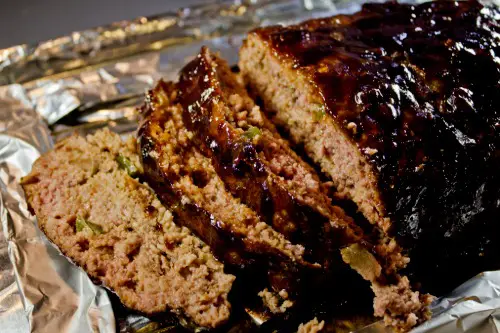
Meatloaf seems like a hearty, timeless dish, but its status as an American classic is largely a 20th-century phenomenon. Food companies promoted it during the Great Depression and WWII as a way to stretch cheap meat. They also sold packaged mixes to make it easy. Without corporate promotion, meatloaf might have remained a regional or seasonal dish.
Frozen meatloaf and boxed mixes made the dish convenient and approachable. Recipes in magazines encouraged homemakers to serve it regularly. That’s how meatloaf became a symbol of home-cooked Americana. The “old-fashioned” feeling is mostly marketing magic.
13. French Toast
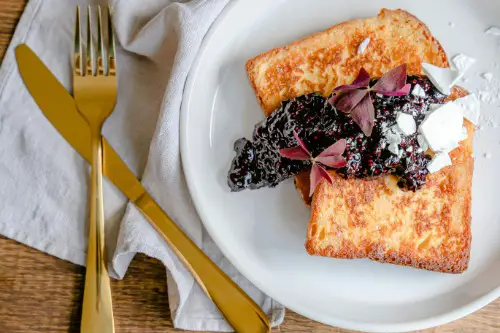
French toast is often thought of as an age-old European dish, but the version Americans eat is heavily influenced by restaurants and frozen breakfast brands. Early recipes existed, but commercial companies standardized the process. Pre-packaged mixes and frozen sticks turned it into a convenient, all-American breakfast. The classic brunch dish is more corporate-crafted than ancient.
Restaurants helped popularize sweet toppings like syrup, powdered sugar, and fruit. Frozen breakfast aisles reinforced the image of French toast as a timeless favorite. Marketing made it feel nostalgic and traditional. In reality, its widespread American identity is relatively new.
This post 13 Popular Dishes Americans Think Are Old but Were Made Up by Corporations was first published on American Charm.


